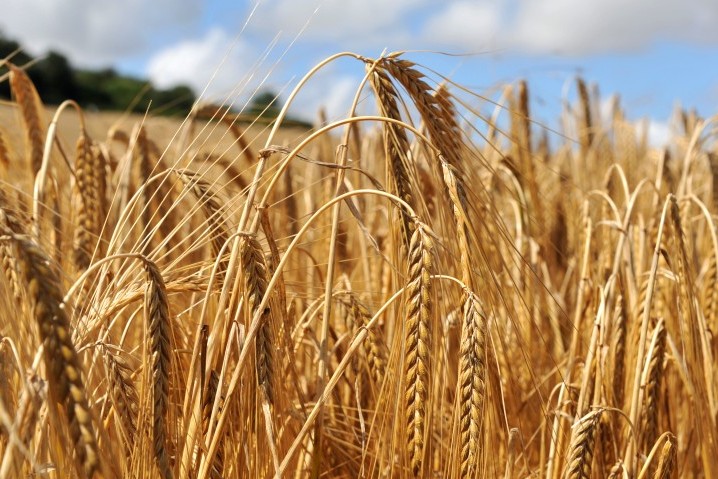The following is the text of the RAMBAM with regard to the harvesting of the “Omer:” [Chapter 7: “Laws of Continual Offerings and Additional Offerings”]
“On the Second Day of Passover, which is the Sixteenth of Nisan, a sacrifice in addition to the regular Additional Sacrifice of the Holiday is brought, and that is the lamb as a burnt offering together with the Omer which is moved forward, backward, right, left, and up-and- down. And the Omer is a communal grain-offering…”
“This grain offering is brought only from the Land of Israel… It is best to bring it from an area near Yerushalayim; if it could not be found there, it may be brought from grain growing anywhere within Eretz Yisrael…”
“It is best to harvest it at night, the night of the sixteenth, whether on a regular day of the week, or even on Shabbat…”
“It is best if it is brought from the standing grain, but it is permissible to be brought from the bundled grain…”
“It is best if it is brought from the moist grain, but it is permissible if it is brought from the dry grain…”
“This ‘Omer’ is brought from barley, and this is a Halachah L’Moshe MiSinai…”
“All the nearby cities would gather, so that it should be conducted with ‘pomp and circumstance’.”
“And three sa’im of barley (equivalent to ten om’rim [plural of ‘omer’] were harvested by three men, with three baskets and three scythes.”
 When it became dark, the harvester would say to all those assembled the following:
When it became dark, the harvester would say to all those assembled the following:
“Has the sun set?”
“And they answered him, ‘Yes!’ ”
“Has the sun set?”
“And they answered him, ‘Yes!’ ”
“Has the sun set?”
“And they answered him, ‘Yes!’ ”
“Is this a scythe?”
“And they answered him, ‘Yes!’ ”
“Is this a scythe?”
“And they answered him, ‘Yes!’ ”
“Is this a scythe?”
“And they answered him, ‘Yes!’ ”
“Is this a basket?”
“And they answered him, ‘Yes!’ ”
“Is this a basket?”
“And they answered him, ‘Yes!’ ”
“Is this a basket?”
“And they answered him, ‘Yes!’ ”
And, if it were the Shabbat, he would say to them the following:
“Is it Shabbat today?”
“And they answered him, ‘Yes!’ ”
“Is it Shabbat today?”
“And they answered him, ‘Yes!’ ”
“Is it Shabbat today?”
“And they answered him, ‘Yes!’ ”
And, after that, he would say to them,
“Shall I harvest?”
“And they answered him, “Harvest!’ ”
“Shall I harvest?”
“And they answered him, “Harvest!’ ”
“Shall I harvest?”
“And they answered him, “Harvest!’ ”
Everything was done three times for emphasis, because a dispute had arisen between the Rabbis of the Talmud and a deviationist sect, and the Rabbis wanted to make it clear that the interpretation of that sect was wrong!
After the barley grain was harvested, and placed in the baskets, it was taken to the courtyard of the Mishkan or, later in history, the Beit HaMikdash, the Temple. There the grain was beaten to extract the kernels. They were winnowed (wind-sifted), and singed with fire.
Afterwards, they were spread in the courtyard, and the wind blew through them. The original three sa’im were ground, and, after all the processing, an “esaron,” a tenth of an “ephah” was obtained, which had been sifted thirteen times.
The fine flour was now ready to be used for the “Minchat HaOmer,” the Omer Grain Offering.
Make every day count! Sign up for the OU Daily Sefirah Reminder Email.